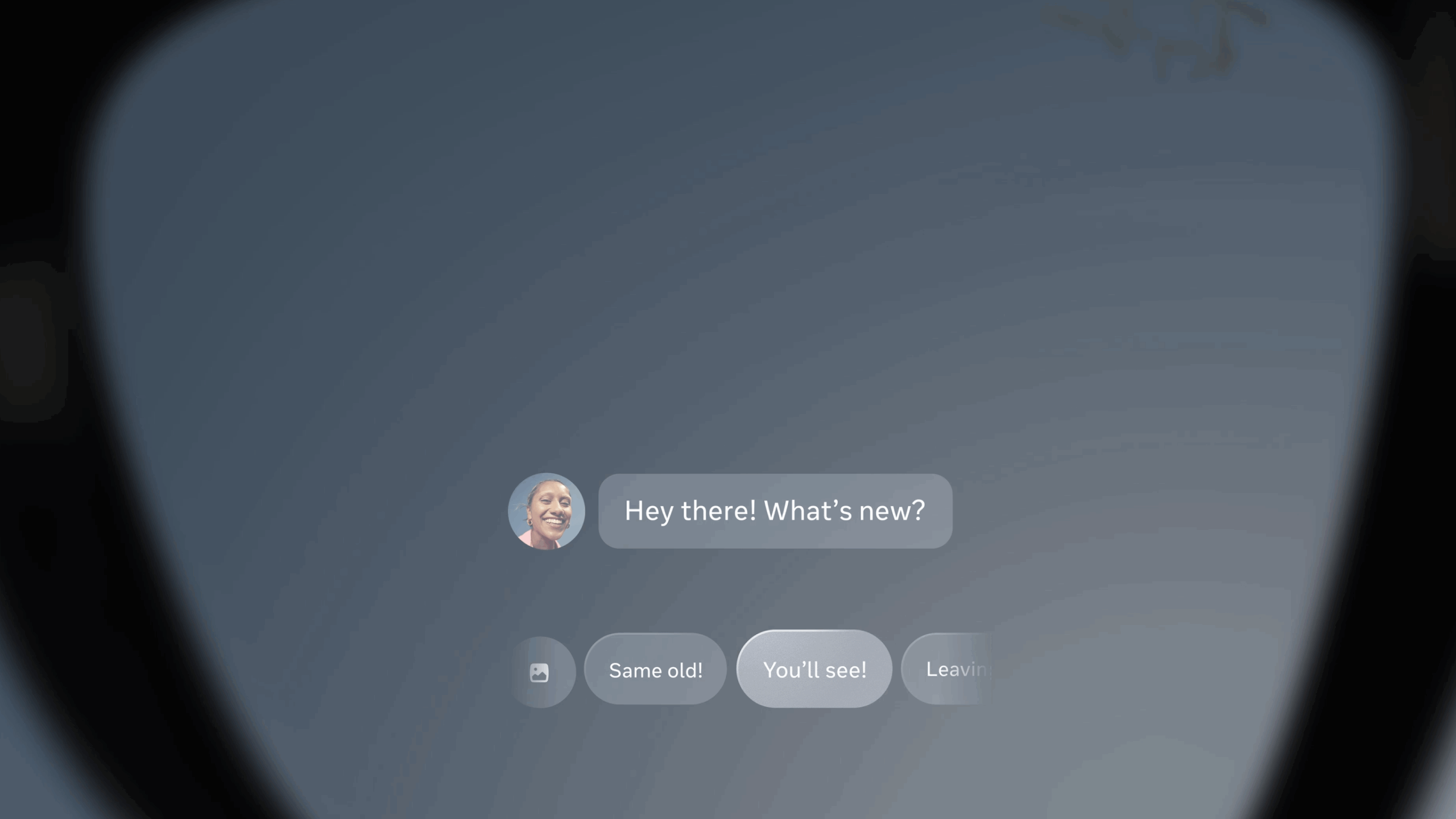Meta is making its boldest attempt yet to move beyond the smartphone with the launch of its new Ray-Ban Display Glasses. Instead of a traditional app model, the company is positioning AI as the main interface for everyday digital life.
At its Connect 2025 developer conference, Meta unveiled smart glasses with an integrated display for the first time. The $799 Ray-Ban Display Glasses will go on sale September 30, serving as the foundation for a larger ecosystem.
The glasses project information directly into the right lens: text messages, navigation instructions, photos, music controls, or results from Meta’s AI service. They also support video calls with an embedded camera perspective and live subtitles with translations. The display offers a 20-degree field of view, 600 x 600 pixels, and brightness up to 5,000 nits.
Moving beyond apps
Meta’s long-term goal appears to be replacing traditional apps with AI-driven services. CTO Andrew Bosworth called AI good solution for many of the tasks apps currently handle. Instead of launching its own app store, Meta is openly considering a future where apps become unnecessary. For Meta, this could be a way to finally claim ground in a market long dominated by Apple and Google, after its failed attempts to break into smartphones.
One new feature hints at this direction: "Live AI," which is set to roll out in the coming months. In a demo video, the glasses use AI to suggest solutions during a conversation, surface relevant information from old chats, and generate message drafts. In practice, that would mean users keep their personal digital history inside Meta’s platform, deepening their reliance on its ecosystem.
Hand gestures with the "Neural Band"
Control comes largely through the "Neural Band," a wristband that recognizes gestures. Users can point and pinch to select elements or rotate their hand to adjust volume. Tapping also activates the voice assistant. More functions are planned later this year, including the ability to type in mid-air.
The glasses run for about six hours per charge, with the carrying case extending battery life up to four times. The built-in camera shoots 12-megapixel photos and 1080p video, but it trails the newer display-free Ray-Ban models and Oakley’s Vanguard glasses, which support 3K recording and last longer on a charge.
The long road to AR
At the same event, Meta also updated its metaverse platform Horizon Worlds. It is introducing a new Horizon Engine for better graphics, performance, and higher user capacity. A new creator tool called "Horizon Studio" will let users build VR worlds, with generative AI helping to create textures and audio. A planned AI assistant could allow developers to make changes through voice commands.
Meta frames its smart glasses and VR products as stepping stones toward full AR glasses, which it expects to ship in 2027. AR hardware is also central to Meta’s work with defense contractor Anduril on new glasses for the U.S. military. The companies are collaborating on an update to Microsoft’s struggling IVAS program. For Anduril founder Palmer Luckey, the project brings him back into contact with Meta. He launched Oculus VR in 2012, which Mark Zuckerberg bought for $2 billion in 2014. After leaving Facebook in 2017, Luckey founded Anduril to focus on military technology.







